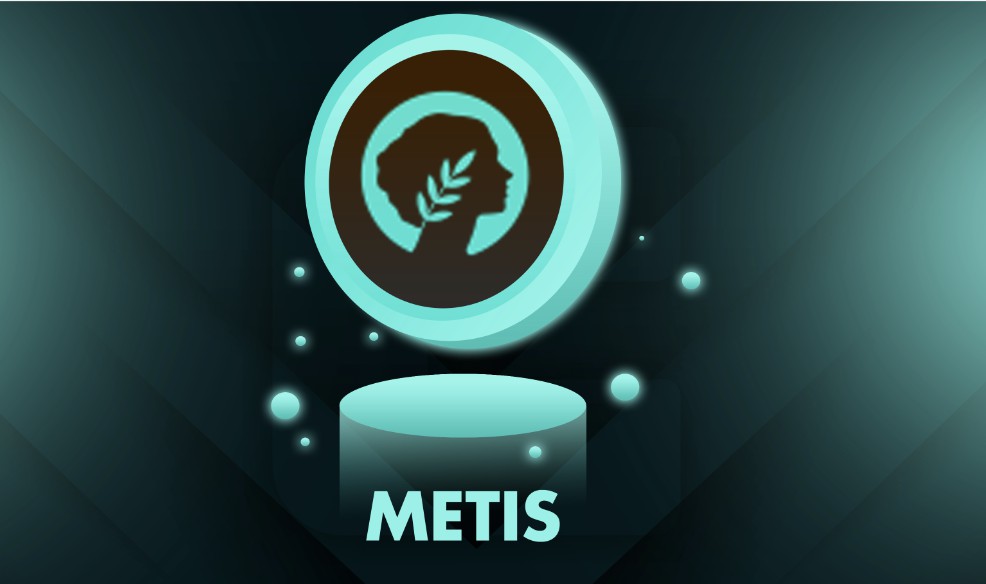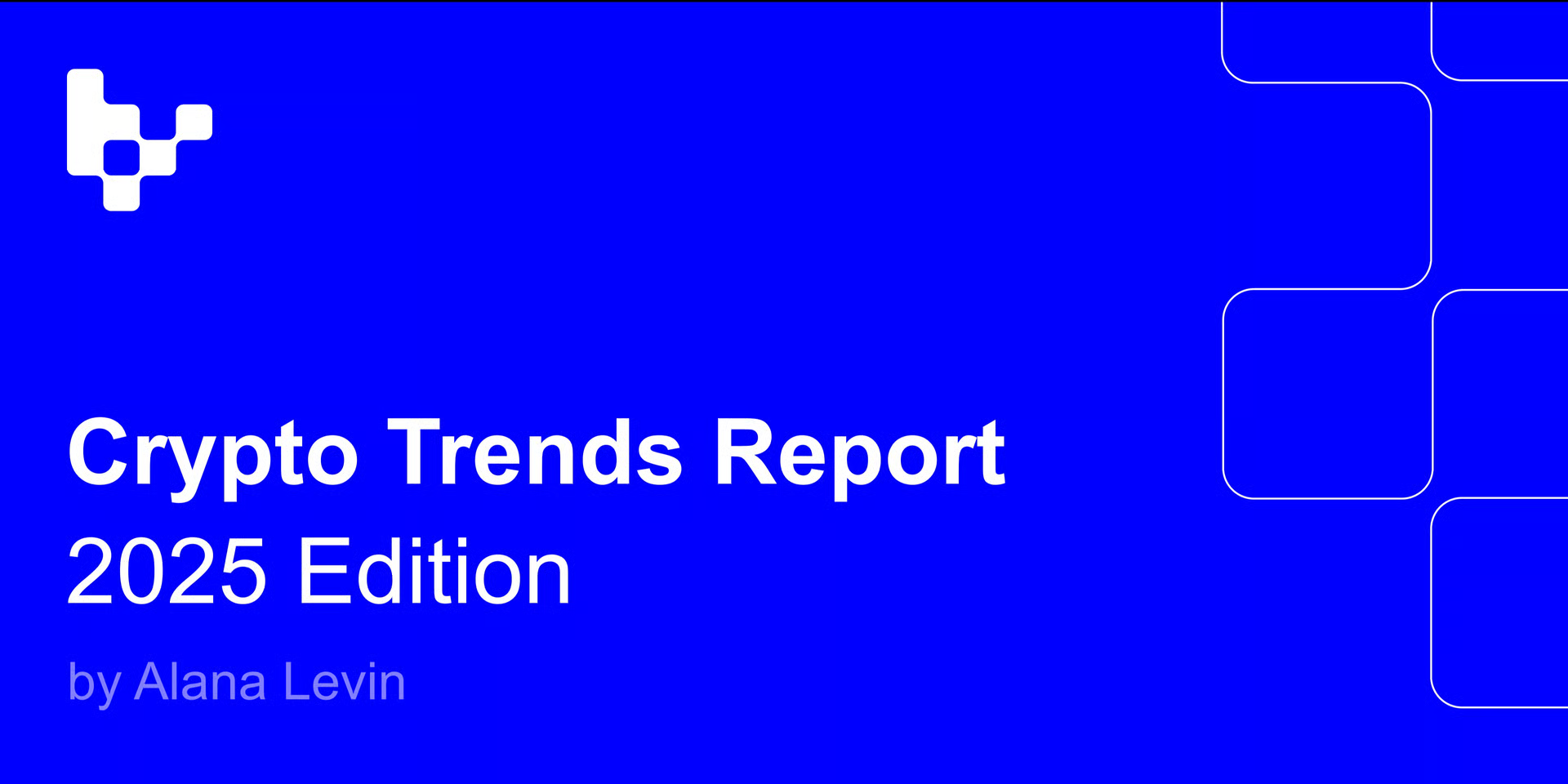Author: YBB Capital Researcher Ac-Core
Foreword
Layer2 is supposed to be an “ethereum-orthodox” scaling path, but Metis has been labelled MEME Layer2 due to rumours that the founding team of Metis is “Vitalik Buterin’s mum/best friend”. Metis has been labelled as MEME Layer2, which is undoubtedly a direct attack on investors’ belief in ethereum’s orthodoxy. However, the essence of blockchain is still “code + finance”, and from an investment perspective, technology and the market have always been a pair of happy enemies, and Metis can take advantage of the lack of other Rollup-centralised sequencers and strong control of the economic model, and stand out from the rest of the Layer2s? to stand out from the crowd?
Introduction to Metis
(left Natalia Ameline, right Elena Sinelnikova)
According to the official Metis website, Elena Sinelnikova, co-creator and CEO of Metis, has been promoting education and popularisation of the blockchain industry. She is one of the co-founders of the educational non-profit organisation CryptoChicks, which is currently the largest women’s blockchain community in the world, with members in 56 countries.Another co-founder of CryptoChicks is Natalia Ameline, who is the mother of Vitalik Buterin, the founder of ethereum. Additionally, Vitalik Buterin’s father, Dmitry Buterin, led the creation of Blockgeeks, a blockchain education company dedicated to developing curricula related to blockchain technology.The Metis Network was founded in 2018 for a May 2021 release.
Metis is an ethereum chain-based Layer2, working on the same principles as other Layer2s, and was the earliest fork of Optimism, with its biggest draw being that it was the first Optimistic Rollup to successfully decentralise the sequencer.The network uses a Proof-of-Stake Sequencer Pool to ensure continuous network availability, censorship resistance, and enable fee sharing and Sequencer pledges. These sequencers are responsible for determining the order in which transactions are packaged, and must obtain the signatures of at least 2/3 of the sequencers in the Sequencer Pool before data can be packaged and uploaded to the Layer1 network. To prevent malicious behaviour by the sequencers, Metis also introduces the role of a verifier that samples the blocks to ensure that the sequencers are ordering the transactions correctly.
The advantages of MPC (Multiparty Computing) are privacy protection and decentralisation, and it is effective for simple Boolean operations. However, the disadvantages are also obvious, as there are no relay nodes to distribute the information, the number of communications increases and the cost of communication within the network rises significantly. This disadvantage will be even more pronounced in blockchain networks that require consensus. In short, Metis turns a single-point sequencer into a pool of sequencers, in order to allow decentralised sequencers to reach a consensus to complete the signature, and achieves decentralisation through the node pledge mechanism and the rotation mechanism, which may not ultimately require a network cost much lower than that of Layer1, but can achieve MEV-resistance+solve the problem of a single-point of failure, and at the same time distribute the proceeds to the node pledgers. However, neither Metis’ MPC solution nor Radius’ public Mempool address the problem that decentralised sequencers add to the network burden and put the cost ultimately on the user.
The recent surge in Metis TVL has drawn attention to the importance of decentralised sequencers, with the OP scheme currently ranking fifth in TVL among all Layer2 networks, according to L2BEAT data. Apart from market value considerations, the author believes that most of Metis’ schemes are reasonable and are a standard decentralised sequencer scheme. The design intent is both to actively distribute the cake, but also to show the market the value capture of Layer2 native tokens, not just limited to Gas Fee and governance.
Source: L2BEAT Data time 24/02/01
Rollup Three Elements
Rollup is one of the Layer2 solutions, also known as rollup. It works by migrating transaction calculations and storage performed on the main Ethernet network (i.e., Layer1) to Layer2 for processing and compression, and then uploading the compressed data to the main Ethernet network, thus extending the performance of Ethernet.
Rollup can be divided into ZK Rollup and Optimistic Rollup depending on the scheme used to ensure the validity of the compressed data (i.e., the correctness of the data.) It involves off-chain computation where transactions are packaged up on the chain every few minutes for rolling validation and bookkeeping, hence the name. However, even though we usually refer to it as a Rollup chain, the off-chain portion of a Rollup is not the full blockchain, but literally rolls up a bunch of transactions to form a Rollup transaction, and all the nodes that receive the Rollup transaction do not execute the logic that was rolled up, but rather only the result of the execution of that logic.
Photo credit: Author’s own
- Sequencer
Sequencer is the role in L2 responsible for sorting, organising, packaging and submitting the transactions to the L1 network. Most L2 projects, at present, rely on a single sequencer (usually the project itself) to complete the above work, which also has two security issues: 1. Single point of failure, if the sequencer has problems due to attacks or technical failures, the entire network will be shut down;
2. scalability issues, where a single sequencer may struggle to cope with increasing transaction volumes.
- Validation
During the transaction process, the packaged data sent by the sequencer needs to be validated. Currently, most of the validation of Ether Rollup is performed by Ether Rollup smart contracts to ensure the trustworthiness of the data. There are two different validation methods: ZK Rollup (Zero Knowledge Rollup) and Optimistic Rollup. Example:
ZK Rollup:
Verification Methodology: ZK Rollup uses Zero-Knowledge Proofs to verify the correctness of all transactions that occur at Layer2. Zero-Knowledge Proofs allow the verifier to confirm the validity of a transaction without knowing the details of that transaction;
Privacy: ZK Rollup emphasises user privacy, as the “proofs” of calculations are submitted on Layer1 rather than the details of transactions. The details of the transaction are performed on Layer2, while Layer1 only verifies the validity of the zero-knowledge proof.
Optimistic Rollup:
Validation Methodology: Optimistic Rollup adopts an “optimistic” strategy, where all transactions are assumed to be legitimate, and are then validated only when necessary. Verification is done through Fraud Proofs, where a proof is submitted on Layer1 that a transaction on Layer2 violates the rules;
Real-time: Optimistic Rollup’s transactions on Layer2 can be performed quickly due to the assumption that all transactions are legitimate, and validation occurs when a dispute or disagreement arises.
- DA (Data Availability)
DA, or Data Availability, publishes the status data of each transaction processed down the chain publicly so that other participants can also access and use this transaction status data. Some Layer2s write transaction status data to Ether Layer1, thus enabling DA. there are also Rollup-Layer2s that write transaction key data to third-party blockchains, where data availability presupposes that the data is trustworthy. Example:
DA in Optimistic Rollup: ensures that data for all transactions on Layer2 is available on Layer1. If the data is not available, anyone can dispute it on Layer1, which helps prevent potential data tampering or omissions;
Commitments in ZK Rollup: in Layer2, the computation and storage of all transactions occurs, but only the results of the computations (called commitments) are submitted to Layer1. zero-knowledge certificates are used to prove that these commitments are correct.
Note: In ZK Rollup, “Commitment” focuses on verifying the correctness of the computation results of the transactions on Layer2, while “Data Availability” focuses on ensuring that Layer1 has access to the data of all the transactions on Layer2, which are usually complementary to each other to ensure the security and reliability of the whole system.
Of the three key elements of Rollup, the sequencer is considered the most critical. The sequencer is responsible for performing the process of sorting and compressing Layer2 transaction information down the chain. Since this process involves the verification of the trustworthiness of the data, it is crucial to achieve data availability. However, when the sequencer is decentralised, the implementation of data trustworthiness verification and availability may not be so critical.
A POS Consensus-Based Decentralised Sorter for Metis
Source: MetisL2
- Sorter Selection
The Metis Rollup improves on the “Transaction Data Validation Board” by introducing a role called “Validator” in the Layer2 computation process and incentivising validation nodes to validate transactions quickly through competitive mining. It introduces a role called “Validator” in the Layer2 computation process and incentivises the validation nodes to validate the transactions quickly through a competitive mining mechanism, which is implemented through a competitive mechanism. Similar to other Layer1 (L1) networks that use the Proof-of-Stake (POS) mechanism, transactions on Metis need to be verified by nodes. As a result, there is no issue of disputing data packaged from Metis and transmitted to L1, which avoids the problem of intervals and delays in extracting assets from Metis to the main Ethernet network.
A significant difference in the Metis Rollup compared to the Optimistic Rollup is that it only takes a few hours or minutes for assets to be extracted from Metis to the Ethernet L1 layer. This highlights Metis Rollup’s advantages in terms of efficiency and speed in processing transactions. Overall, the higher the lockup amount the higher the probability of a node joining the sequencer. Of course there is some random component to this.
- MPC (Multi-Party Computing) for the sequencer
Metis’ implementation of decentralisation of the sequencer involves three key roles: the administrator (Admin), the sequencer and the PoS-based consensus layer.
Administrator: responsible for setting key parameters of the overall network, as well as managing the addition of sequencer eligibility to the pool. The protocol parties no longer hold absolute control over such matters directly, but rather they are executed by the Administrator after validation through a proposal. One of the difficulties in achieving decentralisation lies in the fact that the management of the sequencers must be carried out in a decentralised manner, while remaining efficient and convenient;
Sequencers: Metis uses MPC (Multi-Party Computation) signatures based on TSS (Threshold Signature Scheme) to manage the signature authority of multiple sequencers. Each sequencer has the right to decide a Batch and involve all sequencers by means of MPC signature. If the number of signatures exceeds 2/3, the Batch is considered valid and can be submitted to the Rollup contract on L1. The MPC signatures performed by the sequencer pool are managed by another contract in the PoS-based network. When the PoS network fails to detect the MPC address, the MPC module is triggered to generate the key;
PoS-based consensus layer: the PoS network is responsible for managing contracts with sequencer signing privileges, monitoring MPC addresses, and triggering key generation. The generated keys are sliced and distributed to each sequencer in the pool for MPC signing. The setup of this module covers the lifecycle management of keys, including multi-signature generation, key re-sharing, applying signatures, and deleting signatures;
The reason for adopting TSS is its high fault tolerance and flexibility. Compared to multi-signature, TSS does not need to verify each signature on the chain, but rather aggregates the signatures of all signers and checks them uniformly, which improves the transaction confirmation rate. In addition, the communication between PoS nodes uses a separate Tendermint channel, while the MPC runtime communication uses the libp2p protocol. This whole system is designed to achieve efficient and secure decentralised management of the sequencer.
Transaction flow of Metis sequencer
1. The initiating user starts the transaction; 2. The transaction is forwarded to the network sequencer node; 3. Block generation: the sequencer creates a block when it accepts the transaction as valid; 4. Finalisation: the Multi-Party Computing (MPC) node speaks about the merging of the blocks and forwards them to the main Ether chain.
MetisEDF
The Metis Eco-Development Fund (MetisEDF) provides financial support for this purpose, covering a number of aspects such as incentivising the development and deployment of protocols, providing liquidity support, conducting security audits and implementing liquidity mining schemes. The allocation includes:
Sequencer Mining: 65.4% (3 million $METIS / >$260 million); and
Ecosystem Funding: 34.6% (1.6 Million $METIS / >$140 Million).
The centralised sequencer question
Photo credit: Author’s own
The principle of Ethernet is that each node stores and executes every transaction submitted to it by the user, and this high level of security also leads to the whole network being very expensive, so it needs to expand the capacity of the whole network and adopt the Rollup solution. Simply put Rollup = a set of contracts in Layer1 + its own network nodes in Layer2, i.e., on-chain smart contract + off-chain aggregator, which relies on ethereum for settlement, consensus, and data availability, and is only responsible for executing the Rollup itself.
- The on-chain smart contract indicates that its trust model is a smart contract on Ethernet, borrowing the security of Ethernet;
- The off-chain aggregator, which executes and aggregates transactions off-chain, compressing large volumes of transactions and ultimately placing them on the main Ether network to achieve the goal of faster and cheaper transactions.
The Layer2 network node has a number of components, of which the Sequencer component is the most important. It is responsible for receiving transaction requests on Layer2, deciding their execution order and packaging the transaction sequence into a batch, which is ultimately transmitted to the Rollup project’s contract on Layer1. While all Layer2 Rollups on Ether have centralised Sequencers, Metis has taken the opportunity to become a decentralised Sequencer.
A Layer2 full node can obtain a sequence of transactions in two ways: either directly from the sequencer or by reading a batch of transactions sent by the sequencer to Layer1, but the latter has stronger immutable properties. Since transaction execution changes the state of the blockchain ledger, to ensure consistency, the Layer2 full node must synchronise the ledger state with the sequencer in addition to obtaining the transaction sequence. Therefore, the task of the sequencer is not only to send the transaction batch to the Rollup contract of Layer1, but also to transmit the state update result StateRoot/StateDiff after the transaction execution to Layer1. In general terms, the sequencer’s job is to process and sequence the transactions into blocks added to the blockchain, and is responsible for processing transactions in batch and posting them to the Layer1 Smart Contracts.
For the Layer2 nodes, as long as they get the sequence of transactions and the original StateRoot of the Rollup on Layer1, they can restore the blockchain ledger of Layer2 and calculate the latest StateRoot; conversely, the StateRoot calculated by the Layer2 nodes themselves is not consistent with the StateRoot that is published by the sequencer to the Layer1 smart contract. means that the sequencer is fraudulent. In summary, Layer1 is more decentralised, trustless and secure than Layer2’s own network.
Optimistic Rollup, for example, allows all Layer2 nodes to provide Fraud Proof that the data released by the sequencer in Layer1 is wrong. But for Optimism, which doesn’t have Fraud Proof, if it really wanted to steal Layer2 users’ assets through the sequencer, all it would have to do is have the sequencer operator forge transaction orders and transfer other people’s assets from Layer2 to its own address, and then finally transfer the stolen coins to Layer1 through the Bridge contract that comes with the Rollup.
Thoughts on Metis
Source: Chaindebrief
The biggest Layer2 hype of late is undoubtedly the Cancun upgrade, but it will not be exclusively good for Metis, but rather universal. Putting aside the “Vitalik Buterin’s mum / BFF” sentiment, the biggest competition between Metis and other Layer2s is the decentralised sequencer and the economic model below the equity, with TVL showing an overall market cap that is more in line with the feedback from the market on the confidence of Metis users.
Unlike other Layer2s that hold the purse strings themselves and give more revenue back to the users, the OP Rollup economic model is strongly controlled and centralised, with OP Token rewards given to the eco-system to stimulate development and interactions to profit from the Gas spread, unlike Metis which delegates revenue and equity to the pledging community. Unlike this approach, Metis has devolved its revenue interests to the pledgers to compete, dramatically unleashing the financialisation of the Layer2 infrastructure and attracting a lot of attention from the market.
MEME represents more of a culture and some socio-economic factors, as if we buy MEME in the process in addition to its tenfold, hundredfold or even a thousand times the investment expectations, but more part of the process is from our recognition and love of its narrative and all kinds of factors, but always pulling the plate is justice, the growing TVL of Metis is also a kind of feedback for the market on its investment expectations. Putting aside the technical aspect, if we consider the issue of attributes from the perspective of the market, if Inscription is the tester of public chain performance, then MEME is, to a certain extent, the litmus test of market recognition.
















